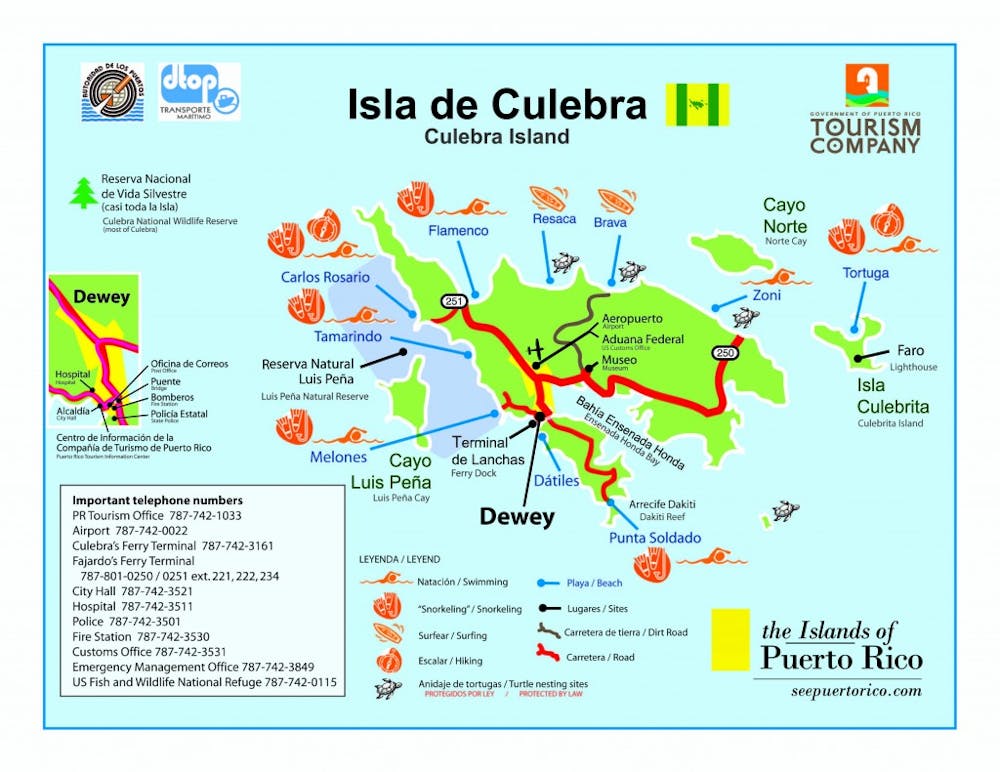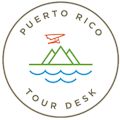Beneath the Sea in Isla Culebra: A Puerto Rican Snorkeling Adventure

Upon our arrival, and after a night in San Juan, we connected with a público, Puerto Rico’s long-distance taxi services, and made our way to the city of Fajardo, on the island’s eastern coastline – we were headed to a little island 20 miles east – Culebra.
Because of its small size, Isla Culebra has a semi-arid climate, receiving less rain than Puerto Rico’s mainland. This resulted in the perfect environment for sunny-sky, daylong snorkeling expeditions.
As an amateur swimmer, I had never been snorkeling before. You can usually find me riding a ski slope, hiking a ridge, fishing a river, or camping in a national park – not swimming in the the vast depths of the ocean – but I live for a challenge and was elated to take on this new endeavor.
Our first venture: scooter revving, snorkeling gear on our backs, we said “hello” to Playa Resaca. If you’re looking for a strenuous hike, uphill and downhill, and up and down again, through bushes and trees and over a creek, then Playa Resaca is your gal. Without doubt, she is a breathtaking and secluded beach, but with too strong of waves and little shelter from currents, she is not one for swimming or snorkeling. After a short walk, some photos and jaunt up a rocky cove, we proceeded to Playa Carlos Rosario.
Neighboring the island’s most popular beach, Playa Flamenco, Carlos Rosario is a hidden gem. At the back of the Flamenco parking lot there is a chained gate, although it says keep out, it is okay to squeeze through. Just past the gate lies a grassy path. Well-traveled and easy to navigate, it leads to a small cove and vacant Playa Carlos Rosario.
Arriving at the beach, I was eager to get in the water, but timid of the unknown. My companion, a scuba and snorkeling veteran, assured me it would be the easiest swim I’d know and lead the way.
He was right. The fact that one has increased buoyancy in salt water had escaped me, as this was my first time in the calm cays of the Caribbean and the practice differed from swimming at wavy, oceanside beaches. Once I started floating and got the hang of preventing water leaks in my rental tube and goggles, snorkeling was truly relaxing.
The second my head disappeared underwater I was in another world; entranced by the foreign elements I had once only seen through images. There was life everywhere. At first I was hesitant that I would accidently disturb the community I was observing, but I eventually gave in to the ocean’s rhythm and drifted out into deeper water. I was surrounded by a nature that I had never known and couldn’t have been more mesmerized.
We swam out to an area about 12 feet deep, coral all around us, a sandy bottom centered below; I slowly circled around, taking in the every little part about the scene around me. I was charmed by multiple blue parrotfish and bright green wrasse, several species of snapper, damselfish, and angelfish – we even swam alongside a confident lobster and caught glimpse of a shy reef octopus.
Diving down to the bottom of a coral city, my partner peered through windows and doorways, as if he were introducing himself as the new neighbor. A yellowtail snapper quickly welcomed his greeting and remained his friendly sidekick throughout the rest of the day.
Although countless others had snorkeled before me and many would do so after, in a small way, I felt like a pioneer, discovering a new territory with the most spirited ambition.
It was hard to get me out of the water that day. As we began to lose the sun’s spotlight and the water temperature dropped, we finally emerged, with pruned fingers and enlivened souls. Watching the sun set over the cove we discussed our favorite sightings of the day. I could not wait for what tomorrow would teach me.
Day two, sun shining, we decided to cover more ground and set off toward Playa Zoni on the western side of Culebra. Another quiet beach, often our favorites, Playa Zoni sits below a beautiful, north-facing hillside scattered with both modest and handsome homes. A preferred breeding territory for la tortuga, the sea turtle, we were cautious of the zoned boundaries for nesting, as we settled our things under a tree and ran out to the shore.
Producing choppier waves than Rosario, snorkeling at Zoni was a little more demanding, though we quickly began to pilot away from the shoreline and into cliff-like pockets of coral and open chambers of crystal-clear blue water.
I was amazed by the differences between the coral and the wildlife at Rosario and Zoni. The diversity of fish was extensive at Rosario, but the complexity of coral formations and species was far greater at Zoni. Weather and waves had shaped Zoni’s coral into rising walls and a sandy beach covered the ocean floor. Sea fans and brain coral were abundant. Big fish leisurely voyaged alone, while small fish hurried together in large schools. Energized, I playfully swam after a school of bold, purple fish, pretending to commission a game of tag as we darted by one another. The frolic was bliss.
My most enduring memory of Zoni, however, is of neither fish nor coral. It is of the ocean. The infinite, silent, dark blue ocean as the reef ended and the water deepened. Fixated, starring out at that deep blue sea, I felt exposed and all at once empowered by the environment that I was in. A little nervous of what could be beyond my sight, but calmed by the tranquility around me, it was a profound feeling.
Having always been a clumsy swimmer, I am so happy to embrace snorkeling and with so many more beaches to explore and communities to dive into, I am thirsty for my next trip to a cay, reef or cove. I have yet to see a sea turtle in its natural habitat and, snorkel in hand, I am more than ready for that exciting day.
